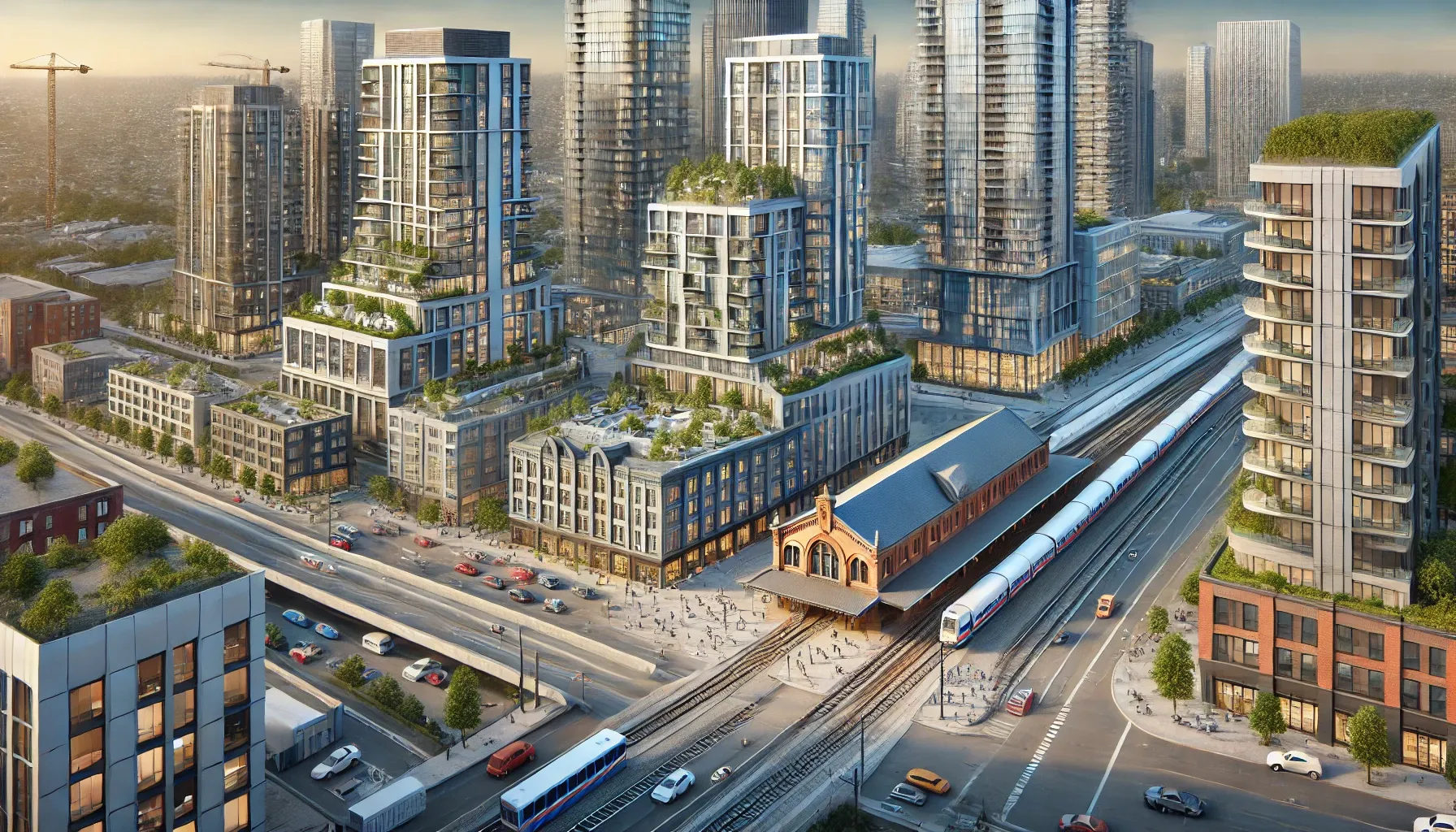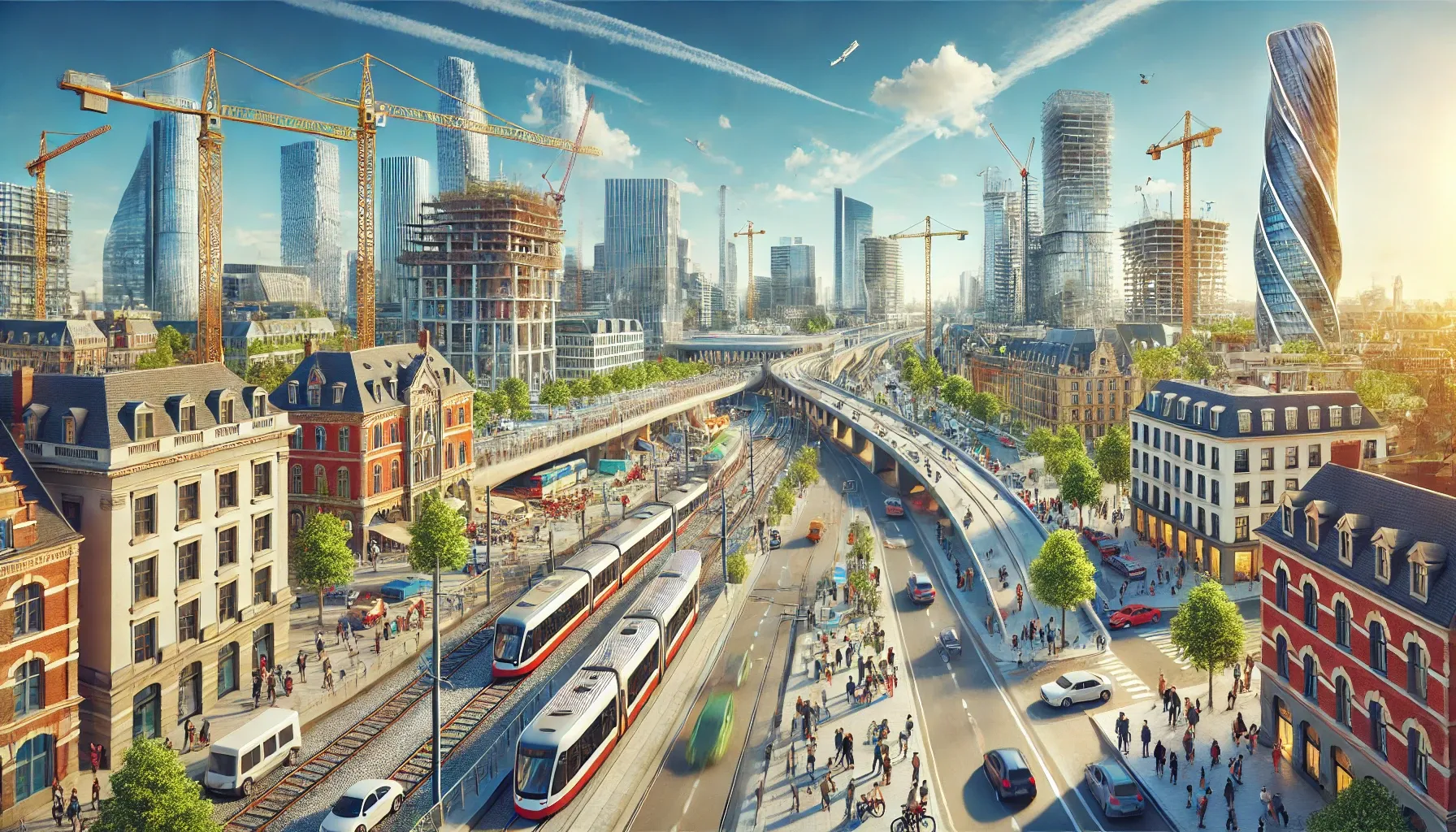Why do real estate prices depend on location and transportation infrastructure?

- How does location affect real estate prices and market demand?
- The growth in the number of air passengers and its impact on the real estate market
Why do real estate prices vary depending on location?
Real estate prices can vary significantly depending on their location. This phenomenon is often explained by transportation and logistics costs. If delivery costs are low, then the price per square meter is usually higher.
For example, an establishment located near a main highway has higher productivity than a similar establishment located at a considerable distance. This is because the cost of transportation of materials and finished goods is reduced. In the retail sector, locating a store in a residential area can also significantly increase its revenue, as customers are more likely to visit such locations when returning home. Consequently, the price of commercial real estate in such areas will be higher based on future revenue projections.
The situation in the residential real estate market
The residential real estate market is seeing similar trends. Apartments that are in close proximity to the city center or public transport stops tend to be in high demand, which affects their prices. Owners of such properties can save time and money on commuting, which positively impacts their mobility.
According to data from the mortgage company Nationwide, homes within 500 meters of the subway in London are priced £42,000 higher than similar properties located 1.5 kilometers away from the station.
The impact of transportation infrastructure on prices
The closer the housing is to public transportation stations, the higher its price, up to a certain limit. The presence of airports in the city is also an important factor: places with major air hubs have the same influence on the price as metro stations. In cities with developed air transportation, property values are often higher than in neighboring areas where such services are less available.
An example can be Heathrow in London and Charles de Gaulle in Paris, which are among the busiest airports in Europe and are also located in cities with high housing prices.
Research and its results
Research conducted by Jeffrey Cohen and Kletus Cowling has shown that increasing the distance by 10% between Atlanta Airport and a property results in a 1.5% decrease in its value. Another study by Cohen confirmed that being just 10% closer to Vancouver Airport adds 7.6% to the value of commercial real estate.
However, proximity to runways can negatively impact prices due to noise pollution. According to 14 studies conducted between 2005 and 2016, each additional decibel reduces property value by an amount ranging from 0.2% to 1.7%.
Passenger traffic and its impact on the market
It should be noted that an increase in passenger traffic does not guarantee a rise in real estate prices by itself. It is merely an indicator of positive changes that may lead to greater demand in the market.
The reasons for such changes may include:
- Increase in tourist flow,
- Infrastructure Improvements,
- Overall economic development of the region.
All these factors have a significant impact on market trends, making real estate more attractive for investment.
Growth of air passengers and real estate
Based on the analysis of Eurostat statistics conducted between 2013 and 2016, it can be observed that six out of ten countries experiencing a significant increase in the number of air passengers are also among the states with the highest rates of rising housing prices. For instance, Iceland is a striking example of this trend, as it ranks highly in both lists: over three years, the number of flying passengers has doubled, while property prices have increased by approximately 50%.
Investment opportunities
The latest initiatives and infrastructure projects are opening up additional investment opportunities. An example of this is the opening of a new airport or the modernization of existing facilities, which signals to local authorities a desire to attract a larger flow of tourists.
29 September
29 January
9 October 2024
9 October 2024




New airport in Turkey
A striking example is the new international airport in Turkey, located in Istanbul (Istanbul Yeni Havalimanı), which is set to open its doors in October 2018 on the European side of the city. Turkish media outlets, such as Daily Sabah, refer to this project as the largest in the world, with estimated costs of around 10.5 billion euros.
- The airport will have the capacity to serve 150 airlines.
- It accommodates up to 90 million passengers annually — the same number that the two operating airports in the capital of Turkey handled in 2017.
Development of air transportation in Turkey
Over the past 15 years, there have been significant changes in the development of air transport in Turkey: the number of airports has increased from 26 to 55, and the number of passengers served has risen from 34.5 million to 180 million. The Central Communication Port (Centralny Port Komunikacyjny, CPK), which is set to become one of the largest infrastructure projects in Central and Eastern Europe, is planned to be built 40 kilometers from Warsaw by 2035.
Stages of CPK construction
The first phase of this promising project involves the construction of an international airport capable of serving around 45 million passengers per year, with a planned opening in 2027. The second phase includes the construction of a high-speed railway line, which will reduce travel time from Warsaw to the new airport to 15 minutes, and from other cities in Poland to 2-2.5 hours. There are expectations that this project will serve as a catalyst for the development of the neighboring city of Łódź and its integration with Warsaw.
New airport in Crete
A new airport, Kastelli International Airport, is also planned for the Greek island of Crete to replace the old Nikos Kazandzakis Airport, which has existed since 1937. The new airport is scheduled for completion in 2023 and will be able to handle 9 million passengers per year, which is more than Nikos Kazandzakis, which in turn has a capacity of 6 million tourists.
According to information from Greek Reporter, in 2017, the number of air passengers in Crete increased at a faster rate than in other regions of Greece, by 10.8%, reaching a total of 7.5 million people.

Introduction
Based on the above, we can conclude that the value of real estate in different locations is determined not only by the immediate characteristics of the properties but also by a multitude of external factors. As the author, I observe how the influence of transportation infrastructure, particularly the presence of roads and airports, becomes a decisive element in pricing. The more accessible the logistics, the more attractive the real estate, and consequently, its value.
The impact of transportation infrastructure
I can't help but note that proximity to transport hubs, such as airports and metro stations, significantly increases the demand for housing. This is vividly illustrated by examples from various cities, where the accessibility of transport routes is included in the formula for assessing investment attractiveness. At the same time, it is important to remember that closeness to runways can negatively impact prices due to noise pollution, making the real estate market more multifaceted and diverse.
The impact of the increase in passenger traffic
I also want to point out that the growth of passenger traffic is not an end in itself, but indicates a change in the socio-economic situation, which in turn creates investment attractiveness for the region. A vivid example is Iceland, whose development indirectly shows how tourist traffic can influence the demand for housing and, consequently, its cost. Based on this, the opening of new airports and the expansion of infrastructure can be seen as an indicator of impending growth in real estate prices.
Investment opportunities
Moreover, it is essential to consider the investment opportunities that large-scale development of the transport network opens up. Information about new projects and potential changes in transport accessibility are important indicators that can assist both investors and regular buyers in choosing real estate.
Conclusion
Thus, real estate in a particular region is not just a matter of the meterage and appearance of properties, but a direct consequence of analyzing the external environment in which they are located. Every project, every new metro station or airport can change the price field significantly, and I strive to share this information to help readers better navigate this complex and dynamically changing field.
Comment
Popular Posts
29 September
375
9 October 2024
1485
9 October 2024
9940
Popular Offers

Subscribe to the newsletter from Hatamatata.com!
Subscribe to the newsletter from Hatamatata.com!
I agree to the processing of personal data and confidentiality rules of Hatamatata










